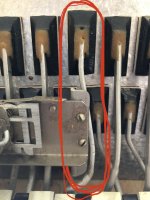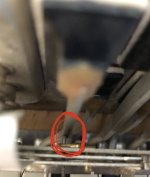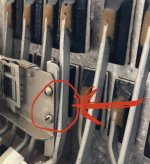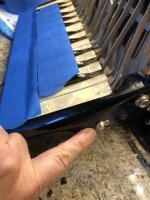AlicePalace
Member
Hi there. I have 3 treble keys that click when I play them and I figured I needed to replace the felt damping under the keys. But today when I opened up the treble, I discovered that for 2 of the keys, the problem is that the rod is hitting against a part of the register block. Pics attached to show this (two are of the same key). So … what’s the best fix in this situation? Replace the felt damping under the keys and hope the added height will resolve the contact issue? Bend the rods? Add a tiny bit of felt to the rod to dampen the click? Nothing on Accordion Revival seems to address this so I’m looking for your expert guidance. Thanks!





